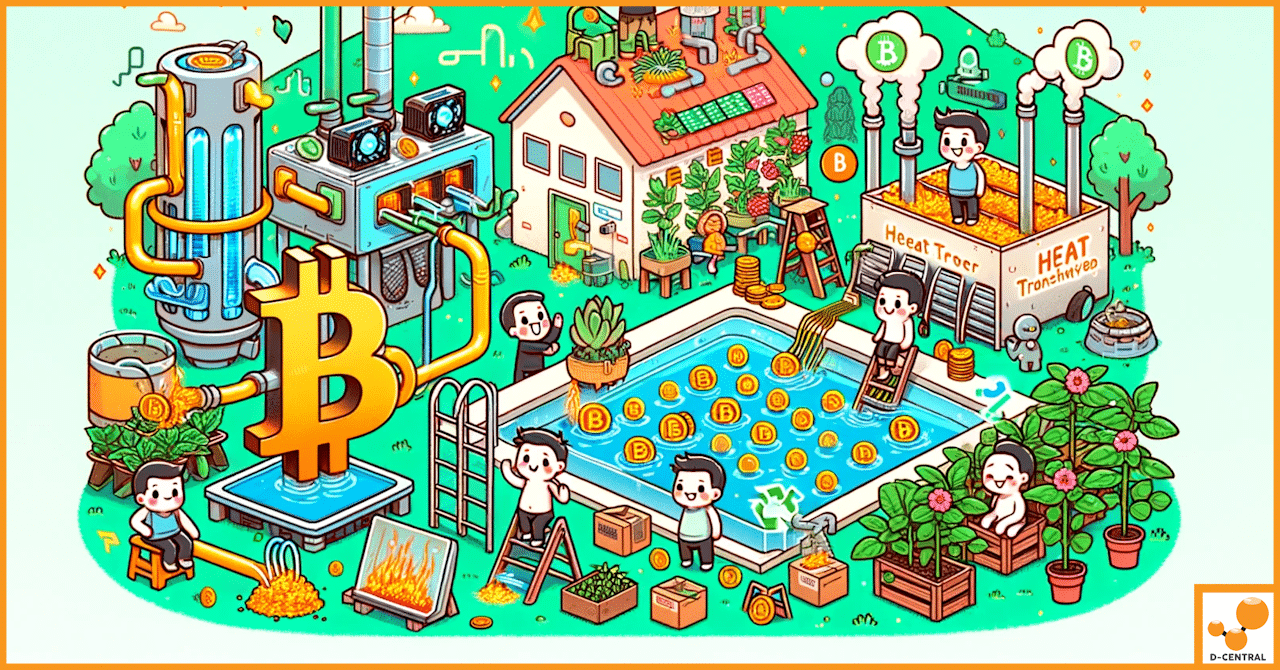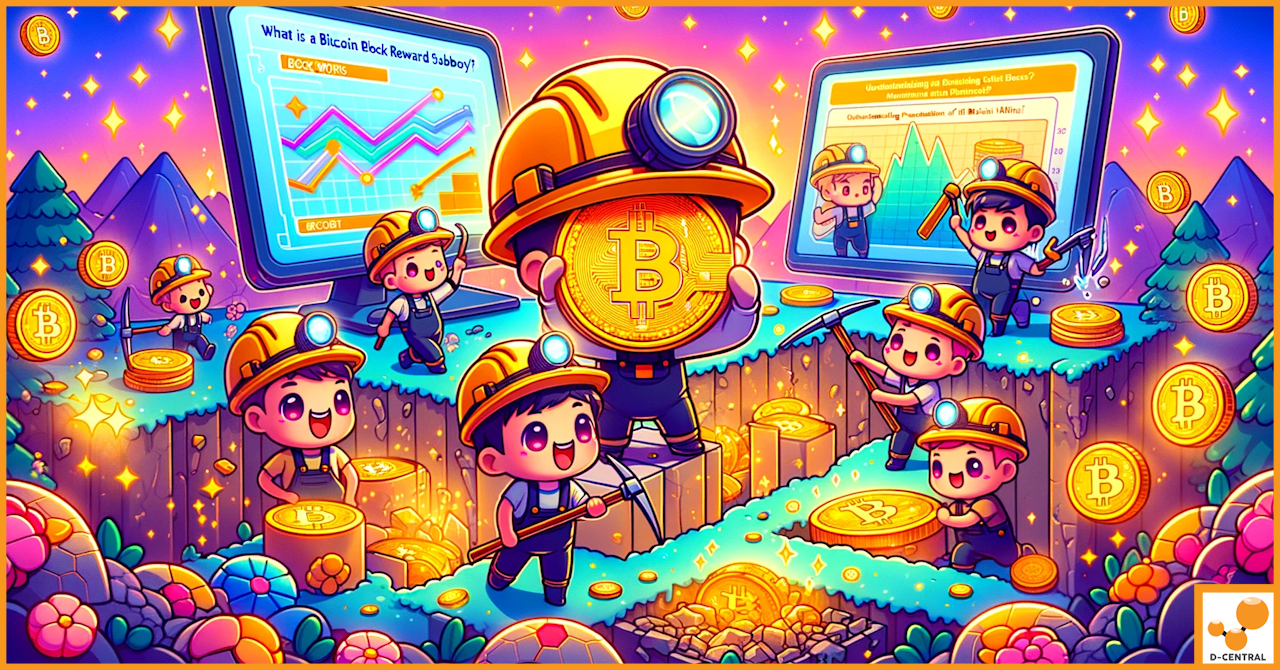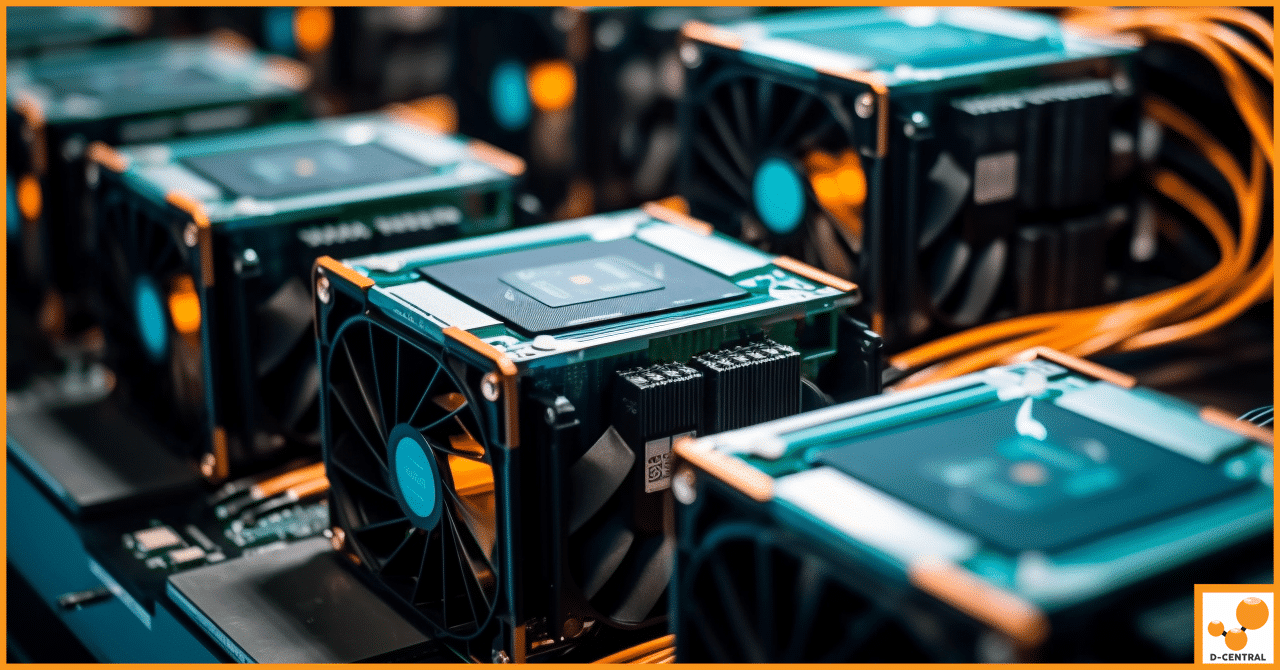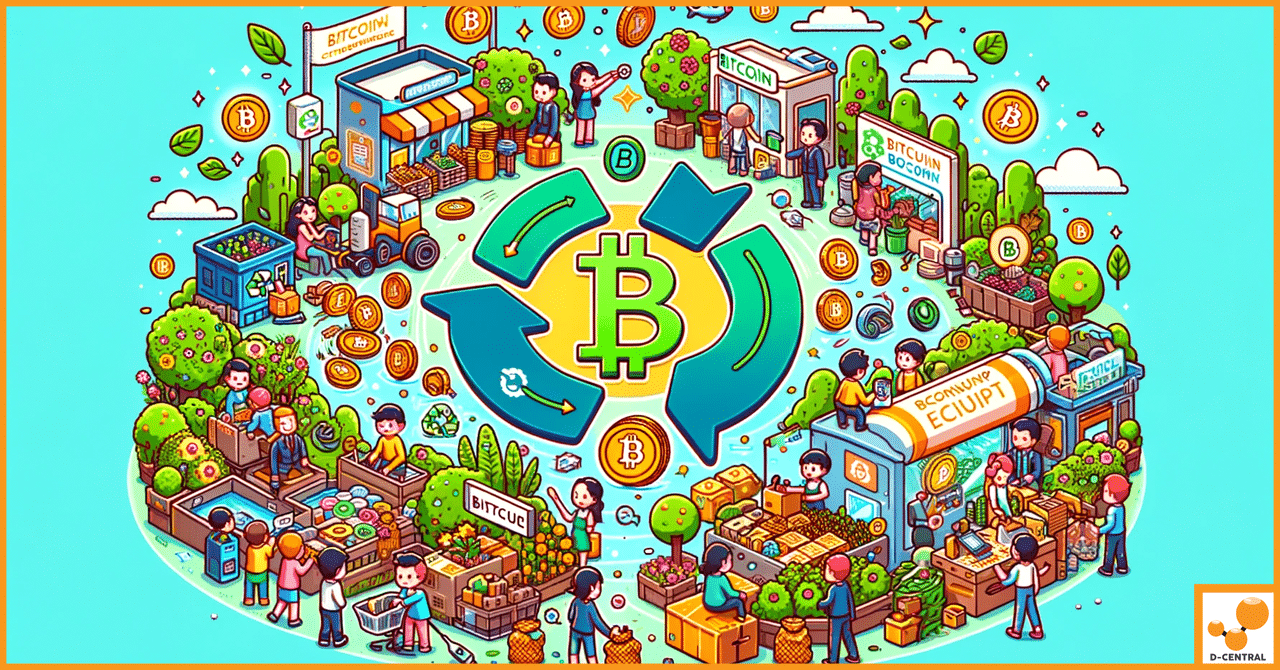
How to Repurpose Excess Bitcoin Miner Heat
Bitcoin mining, the process of validating transactions and securing the Bitcoin network, is notoriously energy-intensive. This computational race to solve
4479 Desserte Nord Autoroute 440, Laval, QC H7P 6E2

Bitcoin, the first and most well-known cryptocurrency, has revolutionized the financial landscape since its inception in 2009. Created by an anonymous entity known as Satoshi Nakamoto, Bitcoin introduced the world to a decentralized form of currency, free from the control of any government or central authority. This decentralization is not just a defining feature; it’s the very foundation upon which Bitcoin’s security and trustworthiness are built. At the heart of this decentralized system is a process known as mining, a mechanism that ensures transactions are verified and secure, while also introducing new bitcoins into circulation.
Mining in the Bitcoin network serves a dual purpose. First, it is critical for the verification of transactions. Every transaction made with Bitcoin is broadcast to the network and needs to be confirmed before it is considered valid. Miners use powerful computers to solve complex mathematical problems, a process that verifies transactions and adds them to the blockchain, Bitcoin’s immutable ledger. The second purpose of mining is to secure the network. By requiring computational work to validate transactions, Bitcoin protects against fraudulent activities and ensures the integrity of the blockchain.
The incentive for miners to dedicate their resources to this process comes in the form of block rewards. A block reward is given to the miner who successfully solves the mathematical problem required to add a new block of transactions to the blockchain. This reward consists of two parts: new bitcoins created with each block (known as the block subsidy) and transaction fees paid by users. The block subsidy is particularly significant because it introduces new bitcoins into circulation, adhering to a predetermined rate of issuance. This issuance rate is halved approximately every four years in an event known as “halving,” ensuring that the total supply of bitcoins never exceeds 21 million.
Understanding the concept of block rewards and block subsidy is crucial for anyone interested in the Bitcoin ecosystem. These mechanisms not only incentivize the maintenance and security of the decentralized network but also control the rate at which new bitcoins are created, influencing the overall supply and, potentially, the value of Bitcoin. As we delve deeper into the intricacies of Bitcoin mining, block rewards, and the block subsidy, we uncover the ingenious balance of incentives and security that keeps the world’s first cryptocurrency running smoothly.
Bitcoin mining is the backbone of the Bitcoin network, providing both security and a mechanism for introducing new bitcoins into circulation. At its core, mining involves participants using specialized hardware to solve complex mathematical puzzles. This process serves two critical functions: transaction verification and the maintenance of the network’s security.
Every Bitcoin transaction is broadcast to the network and must be included in a block to be considered valid and irreversible. Miners collect these transactions from a pool of unconfirmed transactions, known as the mempool, and attempt to form a block. The first step in this process is to verify the transactions, ensuring they are not fraudulent and that the sender has the necessary funds. Once a miner successfully creates a block of verified transactions, they must solve a cryptographic puzzle to add this block to the blockchain, the public ledger of all Bitcoin transactions.
This cryptographic puzzle is where the security of the Bitcoin network comes into play. The puzzle requires a significant amount of computational power to solve, acting as a deterrent against malicious actors. If someone wanted to alter a transaction in a previously confirmed block, they would need to redo the work of solving the puzzle for that block and all subsequent blocks, a task that is practically impossible due to the immense computational power required. This mechanism ensures the integrity and immutability of the blockchain, making Bitcoin a secure and trustworthy system.
The process of solving these cryptographic puzzles is part of the Proof of Work (PoW) consensus mechanism. PoW is a system that requires a demonstrable amount of effort—in this case, computational work—to achieve consensus among network participants about the state of the blockchain. This effort prevents spam and ensures that no single entity can monopolize the network, as the ability to add blocks and confirm transactions is directly tied to the computational power contributed.
The incentive for miners to dedicate their resources and energy to mining comes in the form of block rewards. A block reward is granted to the miner who successfully solves the cryptographic puzzle, allowing them to add the new block to the blockchain. This reward consists of two components: the block subsidy and transaction fees.
The block subsidy is a predetermined amount of new bitcoins created and awarded to the miner. This subsidy is halved approximately every four years in an event known as the halving, which gradually reduces the rate at which new bitcoins are created until the maximum supply of 21 million bitcoins is reached. The second component of the block reward, transaction fees, is made up of the fees users are willing to pay to have their transactions included in a block. Together, these rewards provide a lucrative incentive for miners to continue securing the network and processing transactions.
Bitcoin mining, through the Proof of Work consensus mechanism and the incentive of block rewards, creates a secure, decentralized system where transactions are verified, and new bitcoins are introduced in a controlled manner. This ingenious combination of technology and economics ensures the ongoing health and security of the Bitcoin network.
Block rewards are at the heart of the Bitcoin mining process, serving as the primary incentive for miners to contribute their computational power to the network. These rewards are multifaceted, comprising two main components: the block subsidy and transaction fees. Together, they fulfill the dual purpose of introducing new bitcoins into circulation and incentivizing miners to maintain the network’s security and transaction verification processes.
Block rewards serve a critical dual purpose in the Bitcoin ecosystem:
In summary, block rewards are a fundamental aspect of Bitcoin’s design, ensuring the network remains secure and functional while controlling the introduction of new bitcoins into the economy. As Bitcoin evolves and the block subsidy decreases, the role of transaction fees in the block reward will become increasingly prominent, ensuring that miners remain motivated to support the network’s ongoing operations.
The block subsidy is a crucial component of the Bitcoin ecosystem, representing the number of new bitcoins created and awarded to miners for each block they successfully add to the blockchain. It forms a part of the overall block reward, alongside transaction fees, and plays a vital role in both the introduction of new bitcoins into circulation and the incentivization of miners to maintain the network’s security and efficiency.
When a miner successfully solves the cryptographic puzzle required for adding a new block to the blockchain, they are rewarded with the block subsidy. This subsidy is essentially the creation of new bitcoins, governed by the Bitcoin protocol itself. The amount of the block subsidy is predetermined and decreases over time through a process known as “halving.” Halvings are programmed to occur approximately every four years, cutting the block subsidy in half each time. This mechanism ensures a controlled and gradually diminishing issuance of new bitcoins, mimicking the scarcity and deflationary characteristics of precious metals like gold.
The concept of the block subsidy was introduced at the inception of Bitcoin in 2009, with the initial subsidy set at 50 BTC per block. This generous reward was part of Satoshi Nakamoto’s design to incentivize early adoption and participation in the network. However, to control inflation and ensure a finite supply of 21 million bitcoins, the protocol includes a halving event approximately every four years.
The first halving occurred in November 2012, reducing the block subsidy from 50 BTC to 25 BTC. The second halving, in July 2016, further reduced it to 12.5 BTC, and the most recent halving in May 2020 brought the subsidy down to 6.25 BTC. These halving events are critical milestones in Bitcoin’s timeline, often accompanied by significant attention and speculation regarding their impact on Bitcoin’s price and miner behavior.
As of the latest halving in 2020, the block subsidy stands at 6.25 BTC. The next halving is anticipated to occur in 2024, which will further reduce the subsidy to 3.125 BTC per block. This predictable decrease in block subsidy is a fundamental aspect of Bitcoin’s economic model, ensuring that the total supply of bitcoins grows at a decreasing rate until it reaches the cap of 21 million.
The anticipation surrounding future halvings is not just about the reduction in new bitcoins entering circulation but also about the potential implications for the Bitcoin market and mining ecosystem. As the block subsidy diminishes, the relative importance of transaction fees as a component of the block reward increases. This shift ensures that miners remain incentivized to process transactions and secure the network, even as the opportunity for new bitcoins decreases.
In summary, the block subsidy is a foundational element of Bitcoin’s design, balancing the introduction of new bitcoins with the long-term viability and security of the network. Through the mechanism of halving, Bitcoin ensures a controlled supply expansion, mimicking the scarcity properties of traditional stores of value while incentivizing the miners who keep the network running.
Bitcoin halving events are pivotal moments in the cryptocurrency’s ecosystem, fundamentally influencing both the block subsidy and the broader market dynamics. These events occur approximately every four years and serve as a mechanism to reduce the rate at which new bitcoins are generated and distributed as block rewards to miners. Understanding halvings is crucial for anyone involved in Bitcoin, as they directly impact the supply of new bitcoins and have historically been associated with significant shifts in Bitcoin’s market value.
A Bitcoin halving event is when the reward for mining Bitcoin transactions is cut in half. This halving process is hardcoded into Bitcoin’s protocol by its creator, Satoshi Nakamoto, to control Bitcoin’s supply and mimic the scarcity and deflationary properties of precious metals. The primary purpose of halving is to reduce the rate at which new bitcoins are created, ensuring that the total supply of bitcoins approaches the cap of 21 million in a controlled and predictable manner. This gradual approach to reaching the total supply is designed to counteract inflationary pressures and enhance Bitcoin’s value over time.
Since the inception of Bitcoin, there have been several halving events, each with significant implications for the Bitcoin ecosystem and miner behavior:
The next halving is anticipated to occur in 2024, reducing the block subsidy to 3.125 BTC. As future halvings continue to diminish the block subsidy, the Bitcoin network will increasingly rely on transaction fees to compensate miners. This transition is critical for ensuring the long-term security and viability of the network as the block subsidy approaches zero.
The eventual end of block subsidies, expected around the year 2140, poses questions about the future economics of Bitcoin mining and network security. The prevailing theory is that by the time block subsidies end, transaction fees will be sufficient to incentivize miners to continue securing the network. However, this transition underscores the importance of Bitcoin’s scalability and the need for a robust transaction processing capacity to accommodate the growing demand for Bitcoin transactions.
In summary, Bitcoin halving events are fundamental to the cryptocurrency’s economic model, ensuring a controlled supply and incentivizing miners in the face of decreasing block subsidies. These events have historically been significant markers in Bitcoin’s evolution, affecting miner behavior, market dynamics, and the broader cryptocurrency ecosystem. As Bitcoin continues to mature, the future halvings and the eventual reliance on transaction fees will be critical areas of focus for ensuring the network’s sustainability and security.
As the Bitcoin network continues to evolve, the gradual decrease in block subsidy due to halving events necessitates a closer examination of the transition towards a greater reliance on transaction fees. This shift is not merely a procedural change but represents a fundamental evolution in the incentive structure that underpins Bitcoin’s security and miner compensation. Understanding the dynamics of this transition and its implications is crucial for assessing the long-term sustainability of the Bitcoin network.
The block subsidy, which started at 50 BTC per block in 2009, is designed to halve approximately every four years. This mechanism ensures a controlled release of new bitcoins into circulation, with the subsidy eventually reaching zero around the year 2140. As the block subsidy decreases, the proportion of miner revenue derived from transaction fees is expected to increase. This shift is anticipated to compensate for the diminishing block subsidy, maintaining the economic viability of mining.
Transaction fees are paid by users to have their transactions included in a block, and the amount of these fees is determined by the market, based on demand for block space and network congestion. As the block subsidy diminishes, these fees are expected to become a more significant portion of a miner’s revenue. This transition is critical for ensuring that miners remain incentivized to contribute their computational power to the network, securing it against attacks and processing transactions.
The increasing reliance on transaction fees has several potential implications for miners and the overall security of the Bitcoin network:
Experts and researchers have conducted various studies to assess the long-term sustainability of relying on transaction fees as the primary incentive for miners. Some key points from these studies include:
The transition from block subsidy to transaction fees as the primary source of miner revenue is a critical phase in the evolution of the Bitcoin network. While there are potential challenges associated with this shift, ongoing research, technological advancements, and economic adjustments are expected to play a significant role in ensuring the sustainability of mining incentives and the long-term security and viability of the network.
Understanding the intricacies of block rewards and subsidies is fundamental to grasping the economic model that underpins Bitcoin, the world’s first decentralized cryptocurrency. These mechanisms not only incentivize the miners who secure and sustain the network but also ensure a controlled issuance of new bitcoins, mirroring the scarcity and value proposition of precious metals. As we’ve explored, the transition from block subsidy to transaction fees as a primary incentive for miners marks a critical phase in Bitcoin’s evolution, reflecting its growing maturity and the dynamic nature of its economic model.
The significance of halving events, the decreasing block subsidy, and the increasing reliance on transaction fees are not just technical details. They are pivotal elements that influence Bitcoin’s market dynamics, miner behavior, and overall network security. As such, a deep understanding of these concepts is invaluable for anyone looking to engage with the Bitcoin ecosystem, whether as a miner, investor, developer, or enthusiast.
We encourage all readers to delve further into the world of Bitcoin mining and the broader cryptocurrency landscape. Participation in the Bitcoin community, whether through mining, research, development, or simply informed investment, contributes to the robustness and vitality of the network. Engaging with the community offers the opportunity to learn from a diverse group of individuals united by a shared interest in the transformative potential of cryptocurrencies.
By exploring these resources and participating in the Bitcoin community, individuals can contribute to the ongoing dialogue and development of this revolutionary digital currency. The journey into Bitcoin mining and the broader cryptocurrency world is not only an exploration of a cutting-edge technological frontier but also an engagement with a community driving towards a decentralized and empowered future.
DISCLAIMER: D-Central Technologies and its associated content, including this blog, do not serve as financial advisors or official investment advisors. The insights and opinions shared here or by any guests featured in our content are provided purely for informational and educational purposes. Such communications should not be interpreted as financial, investment, legal, tax, or any form of specific advice. We are committed to advancing the knowledge and understanding of Bitcoin and its potential impact on society. However, we urge our community to proceed with caution and informed judgment in all related endeavors.
Related Posts

Bitcoin mining, the process of validating transactions and securing the Bitcoin network, is notoriously energy-intensive. This computational race to solve

Welcome to the world of cryptocurrency mining, where you can unlock top savings by finding the best ASIC miners for

In the digital age, Bitcoin has emerged not just as a pioneering cryptocurrency but as a beacon of financial innovation,